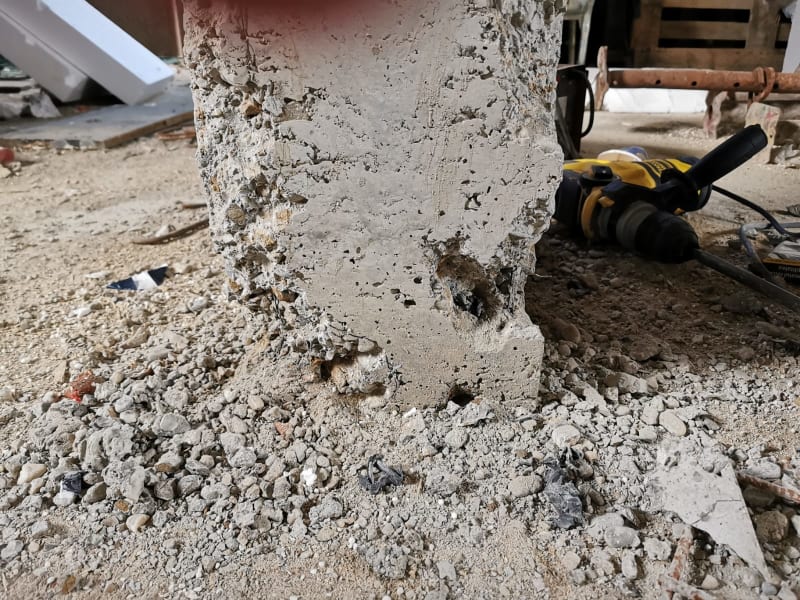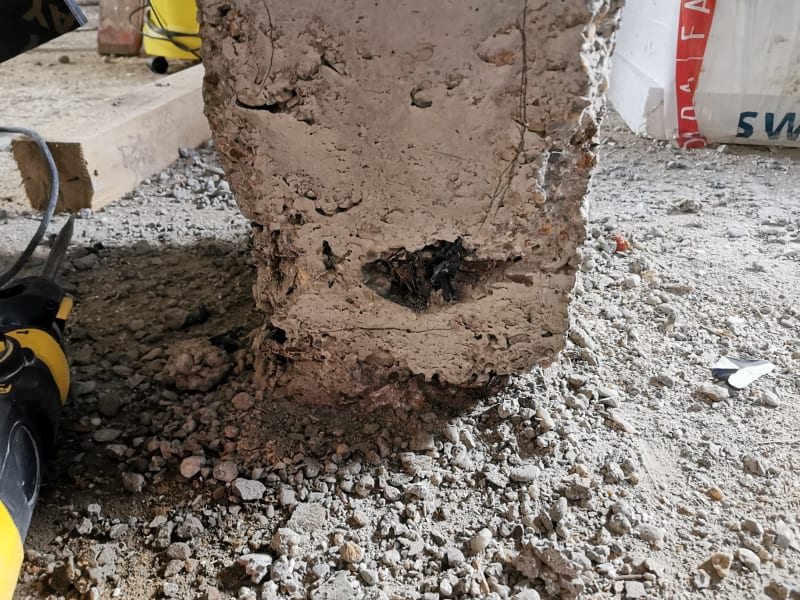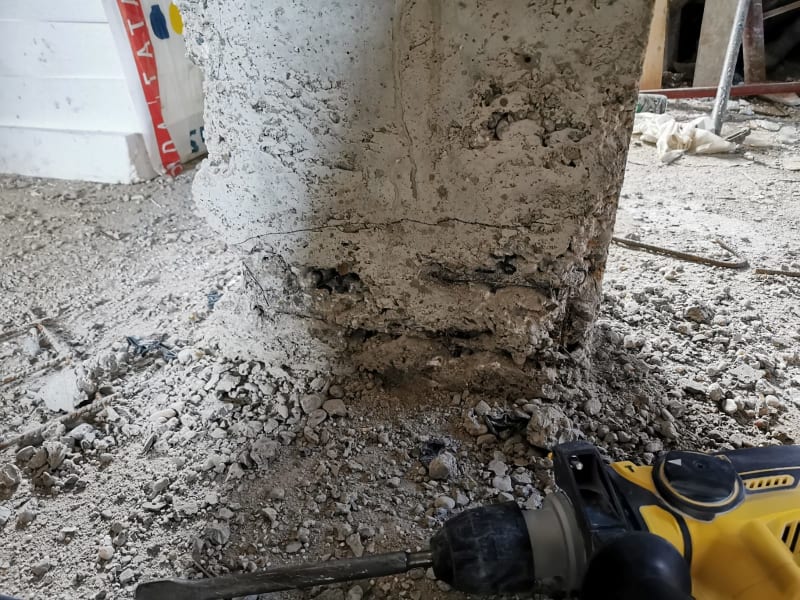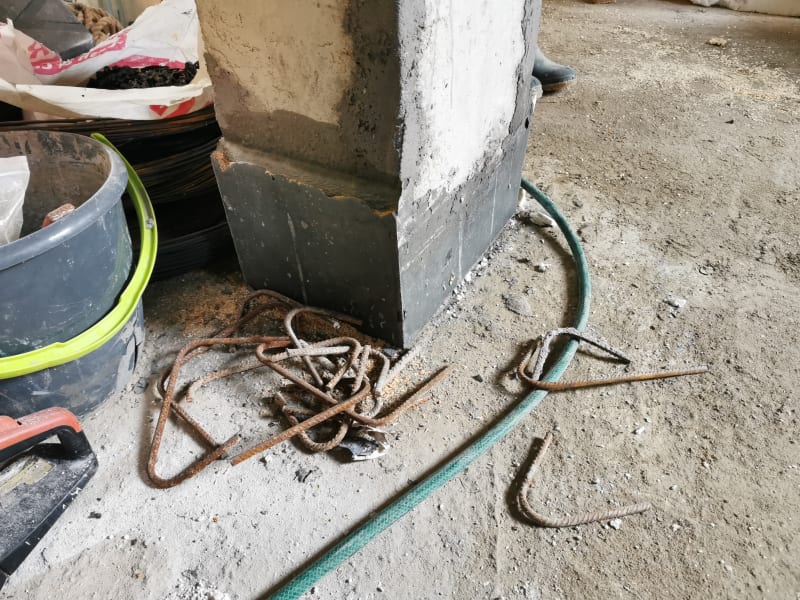Mihail86
Civil/Environmental
- Jan 29, 2021
- 6
Hello, i have almost completed the rehabilitation and extension to 1st floor of my house.
Summarize: Old brick house (ground floor) with simple concrete foundation (not reinforced) but in good shape. The solution was to keep only externals full brick walls (small type, capacity bearing),to reinforce them with metallic net of 10x10cm(6mm diam) and to shotcrete(to pomp wet concrete c20/25) on the internal part (the net was clipped on the wall before the shotcrete). The extension to 1st floor was made by creating a new continous foundation marginal to the existing one and monolithized with chemical anchors (to the existing foundation), from where the new frames started (columns and beams). So the new frame structure is at the interior of the old bricks wall. The new slab between ground floor and 1st floor is siting also on the old wall. For the 1st floor i used new load bearing bricks and installed it in "streps" (so the bricks wall will also be responsible in case of an earthquake to take over efforts). The columns are 40x25cm, C20/25 concrete, 10 vertical bars of 14mm, big stirrups every 10cm, small stirrups and clips every 20cm.
Problem: At the base of the columns i had some small pouring defects (segregations), but for the central column at the ground floor I had to repair a big section of it pouring Sika grout (it is specified in the technical guide it joins with the existing concrete without joints). These issues were discussed with the responsible engineer, the structurist and expert, but still not sure is ok, also i made some indestructible tests with the sclerometer using the combined method and the repairs are on the concrete class ...
Question:: What can happen in case of earthquake with the grout i poured? Can it be shaked and throwed out? Can crack?
I attach photo with the initial problem, after i removed the bad concrete, and with the repair.
Summarize: Old brick house (ground floor) with simple concrete foundation (not reinforced) but in good shape. The solution was to keep only externals full brick walls (small type, capacity bearing),to reinforce them with metallic net of 10x10cm(6mm diam) and to shotcrete(to pomp wet concrete c20/25) on the internal part (the net was clipped on the wall before the shotcrete). The extension to 1st floor was made by creating a new continous foundation marginal to the existing one and monolithized with chemical anchors (to the existing foundation), from where the new frames started (columns and beams). So the new frame structure is at the interior of the old bricks wall. The new slab between ground floor and 1st floor is siting also on the old wall. For the 1st floor i used new load bearing bricks and installed it in "streps" (so the bricks wall will also be responsible in case of an earthquake to take over efforts). The columns are 40x25cm, C20/25 concrete, 10 vertical bars of 14mm, big stirrups every 10cm, small stirrups and clips every 20cm.
Problem: At the base of the columns i had some small pouring defects (segregations), but for the central column at the ground floor I had to repair a big section of it pouring Sika grout (it is specified in the technical guide it joins with the existing concrete without joints). These issues were discussed with the responsible engineer, the structurist and expert, but still not sure is ok, also i made some indestructible tests with the sclerometer using the combined method and the repairs are on the concrete class ...
Question:: What can happen in case of earthquake with the grout i poured? Can it be shaked and throwed out? Can crack?
I attach photo with the initial problem, after i removed the bad concrete, and with the repair.







